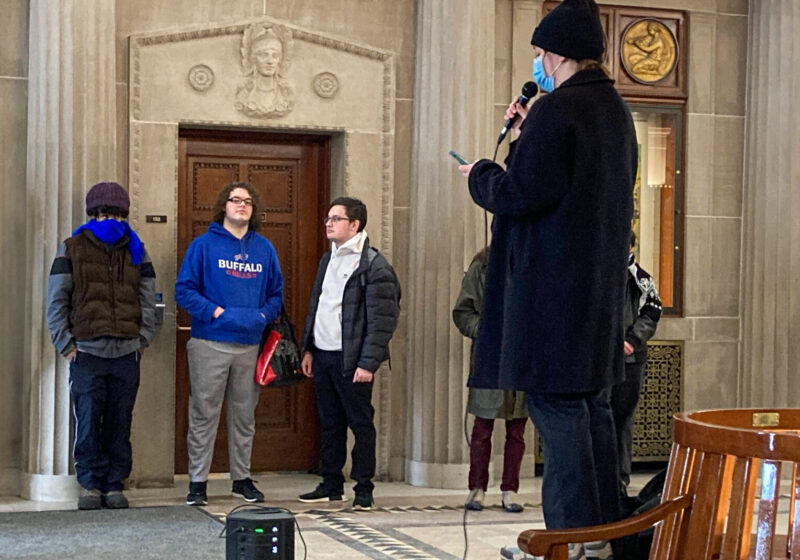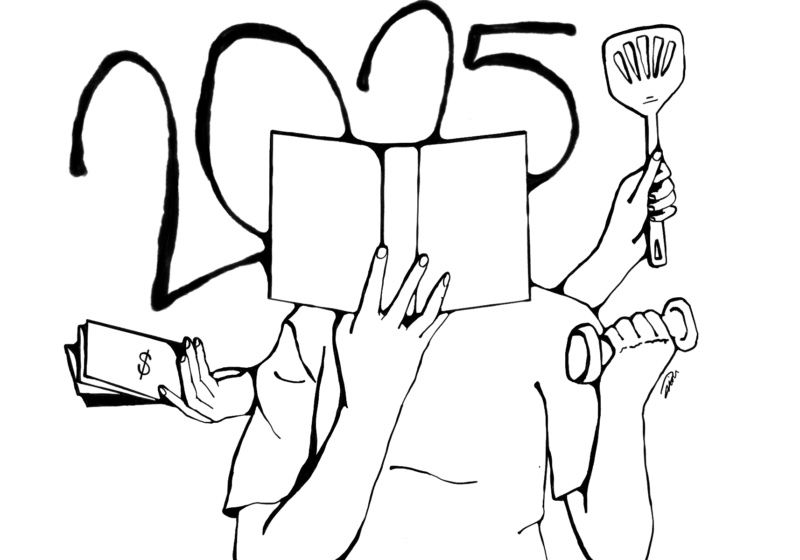A fifteen-foot accordion book adorned the center of the gallery on Thursday when artist Michael Hubbard showcased his collection of different media platforms at the Hartnett Gallery.
The exhibit shares its name,“Eleven Love Songs,” with the accompanying book by Hubbard.
The book consisits of 22 pages, intended to be read as pairs. One page bears a poem and its partner, a painting. Each represents a revolutionary woman, historical or contemporary. They depict eleven women;hence the title of the show.
The poems were created by taking words, phrases, verses, and quotes from four books of poetry : Christine De Pizan’s “Book of the City of Ladies”, Valerie Solanas’ “Scum Manifesto”, Taslima Nasrin’s “All About Women” and Claude Cahun’s “Heroines”.
“This process felt like it’s other people’s words that I am pulling in and creating something different. ” Hubbard said, while addressing the students at a lecture held in Gowen room.
Hubbard draws inspiration from the Riot Grrrl movement of the nineties, and consequently used the punk artists of that time–such as Kathleen Hanna and Tobi Vail, both of Bikini Kill–as his subjects.
“I’m fascinated by the fierce, youthful, anti-establishment rage of the people portrayed.” Hubbard wrote in his artist statement.
Each subject in his book and paintings represent an angry revolutionary feminist who Hubbard can associate as a “punk rock heroine.” They are as old as the first century British queen Boudica who fought against the Romans and as contemporary as Sampat Pal, a rural Indian woman who leads a group of intimidating pink saree-clad women, moving from village to village to redeem women in distress.
These women are also geographically very diverse, ranging from Harriet Tubman, American abolitionist of the 19th century, to the French surrealist Claude Cohen.
Hubbard would put images on top of each other and then use them as references for his paintings.
“I think as an artist you are always struggling to make people spend more time with your art,” Hubbard said. “This is a forceful way that I think someone is going to spend a little bit extra time.”
The bold colors on the canvas and the overlapping of different frames of the imagery convey the woman’s disposition.
“It’s not a simple straightforward portrait of [a] person looking at you with their face in a certain composition,” Hubbard said. “You see a little bit personality happening there because of the different facets going on at the same time.”
One of the main attractions of the exhibition is the nine mix tapes, complete with headphones and cassette player. Each tape represents one of the eleven women who are also part of the book.
“The task was to pick out songs that I felt in some way represent the story of this person’s life,” Hubbard said.
The motive of these mixtapes is not to give an account of this woman’s story but to use songs as a medium through which to convey the feeling that Hubbard associates with the “punk revolutionary feminist”.
The current political climate has also shaped the centerpiece of this exhibition. “Eleven Love Songs” underwent significant changes after the election results came out.
“It became much more angry,” Hubbard said before reciting the last poem in the lecture—“Valerie Solanas.”
The exhibit will be on display until Feb. 19.




